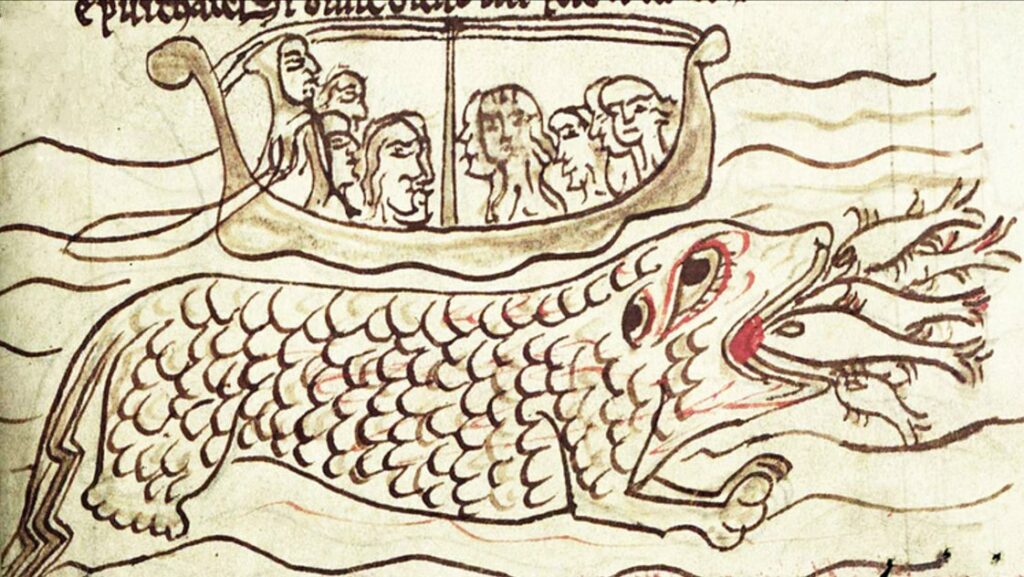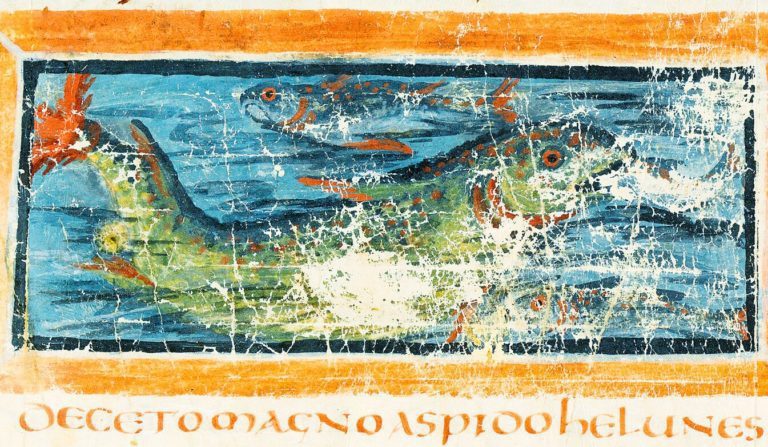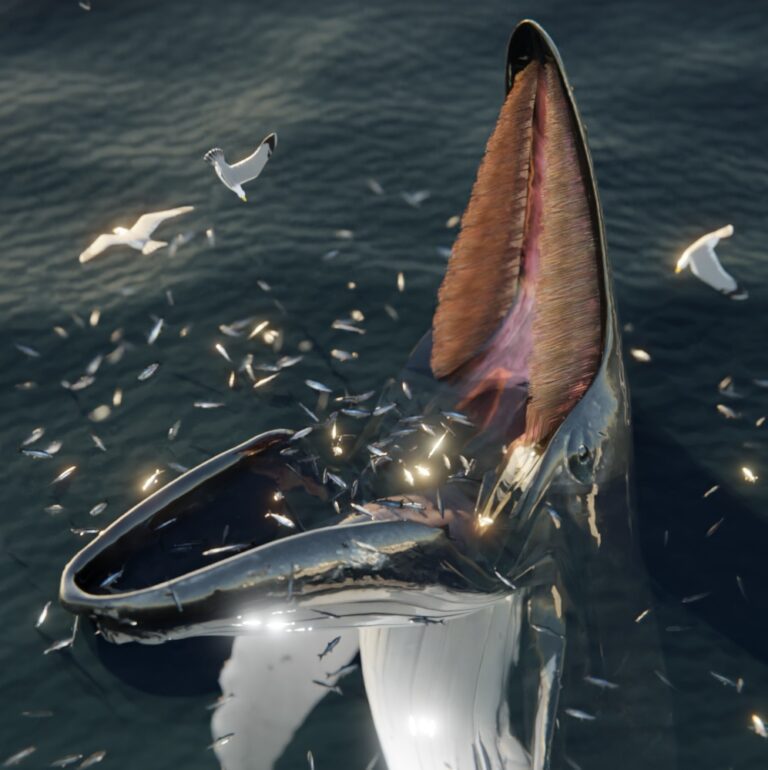When marine biologists first noticed whales “trap-feeding” with mouths wide open at the sea’s surface nine years ago it was thought likely to be a 21st-century phenomenon – but now ancient texts have revealed that the behaviour was probably known about at least 2,000 years ago, but later forgotten.
Also read: Death of man who ‘saved the whale’
Researchers at Flinders University in South Australia have tracked down old descriptions and illustrations that seem to match the peculiar feeding strategy, which was noted from 2014 both in humpback whales in the northern Pacific off Vancouver and Bryde’s whales in the Gulf of Thailand. They now think such early depictions might have contributed to the spread of sea-monster myths.
Whales had been assumed to lunge at their prey until individuals were spotted lurking with their jaws open at right angles, either at or raised above the surface. They would wait for extended periods for shoals of fish to swim or jump over their maws – in the fatal belief that they had found a place of safety – before snapping their jaws shut on their prey.
It was thought that the behaviour might be a new response to changing environmental conditions – although some scientists thought it might be the result of whales being monitored more closely than ever before, with the help of unobtrusive technology such as drones.
Flinders maritime archaeologist Dr John McCarthy first noticed possible parallels while studying 13th-century Norse manuscripts describing the hafgufa. These sea creatures remained part of Icelandic myths until the 18th century, often included in accounts alongside kraken and mermaids.

“It struck me that the Norse description of the hafgufa was very similar to the behaviour shown in videos of trap-feeding whales, but I thought it was just an interesting coincidence at first,” says Dr McCarthy.
“Once I started looking into it in detail and discussing it with colleagues who specialise in mediaeval literature, we realised that the oldest versions of these myths do not describe sea monsters at all, but are explicit in describing a type of whale.
“That’s when we started to get really interested. The more we investigated it, the more interesting the connections became, and the marine biologists we spoke to found the idea fascinating.”
Real and mythical
The Norse manuscripts would have drawn on earlier mediaeval “bestiary” texts that catalogued both real and mythical animals. These include descriptions of the hafgufa-like aspidochelone, creatures said to sometimes emit a scent to attract fish towards their stationary mouths.
Some whales do produce the valuable perfume-ingredient ambergris, and sometimes also eject filtered prey as a way of attracting more through its scent.

“It’s exciting because the question of how long whales have used this technique is key to understanding a range of behavioural and even evolutionary questions,” said Dr Erin Sebo, a Flinders associate professor of mediaeval literature and language and co-author of the study.
“Marine biologists had assumed there was no way of recovering this data but, using mediaeval manuscripts, we’ve been able to answer some of their questions.



“We found that the more fantastical accounts of this sea monster were relatively recent, dating to the 17th and 18th centuries, and there has been a lot of speculation among scientists about whether these accounts might have been provoked by natural phenomena, such as optical illusions or underwater volcanoes.
“In fact, the behaviour described in mediaeval texts, which seemed so unlikely, is simply whale behaviour that we had not observed – but mediaeval and ancient people had.” The new findings have been published in Marine Mammal Science.
Also on Divernet: Diver’s Too-Close Whale Encounter, How Cage-Diving Can Be Positive For Sharks, Krill Trawlers Cut Through Fin-Whale Megapod, Divers Free Ghost-Netted Humpback

